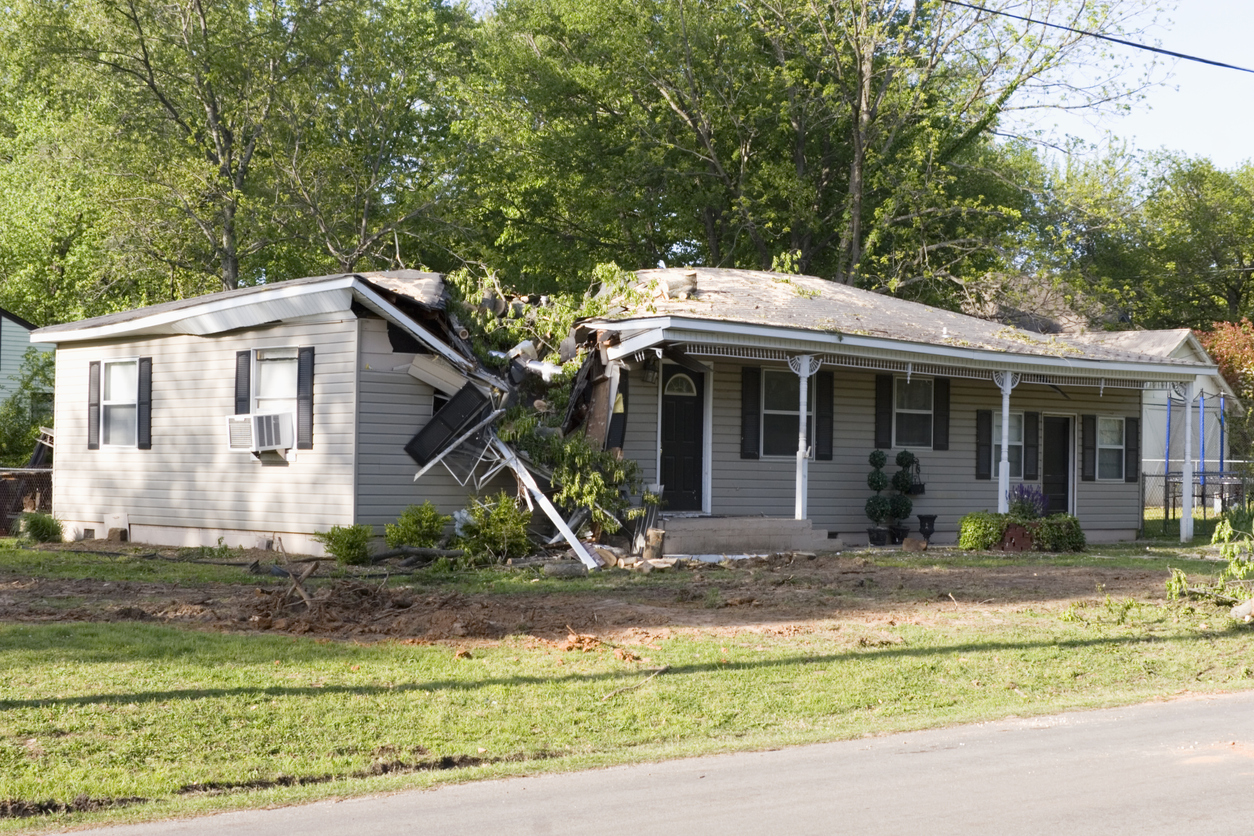Public adjuster Stephen Sarasohn wrote a comment to my recent post, Actual Cash Value Proof Is Important Under Most Replacement Cost Policy Disputes. The comment section sometimes gets lost because it is so far underneath the blog post. But his comment raises an important Florida Supreme Court case1 everyone should study and consider when dealing with partial losses where actual cash value is not defined and for policies not defining the value to be insured when considering coinsurance issues. The one caveat is that this is an older form policy.
These are the facts leading to the valuation dispute:
The appellee owned a number of beach cottages, of two types, which were insured severally by the appellants against loss resulting from wind and hail. The buildings were damaged by a hailstorm and, after an interval of six months, by a hurricane. The owner and the various companies could not agree about the proper amount of reimbursement; so the companies appointed an appraiser, as did the owner. These two failed to concur in the choice of an umpire, and one was designated by the court. After an examination of the buildings, in a manner which is not questioned here, these three men fixed the ‘sound value’ of each of one class of buildings at $2,800 and of each of the other at $2,600.
Every one of the policies contained a co-insurance clause stating that it was a part of the consideration of the contract, a basis for the premium, that the insured should at all times maintain windstorm and hail insurance on each item of not less than fifty per cent of its cash value and that upon the insured’s failure to do this he should become an insurer to the extent of the deficit and should than bear his proportion of the insurance for such a loss. Consequently if the above values should be adopted the co-insurance clause would become effective because on the former class of buildings the insurance carried was but $1,100 and on the latter only $1,000.
Most modern policies written on a replacement cost basis require insurance values based on replacement valuation. Under this older actual cash value form, the court allowed the “sound value” to be determined with depreciation:
Considering first the method announced by the chancellor for the determination of the ‘sound value,’ we have no cause to disturb his conclusion that a depreciation of three per cent a year for nine years was fair. He was warranted in relying on the testimony of one of appellants’ own witnesses that in view of the location of the buildings, this depreciation should be computed on the basis of three per cent annually. If the cost of replacing the two classes of property, as fixed by the appraisers and the umpire, is reduced by twenty-seven per cent, obviously the remainder will be less than twice the amount of insurance against loss by windstorm and hail; so the co-insurance clause would not come into play.
What about the partial repair value for the roofs? How were they to be treated? The court noted the dispute between the parties as follows:
Another question posed by appellants is substantially this: Should they be ‘required to pay the entire cost of replacing’ roofs approximately ten years old which had been originally designed to last ten years, without being credited with depreciation? The question is restated by appellee: ‘When insured structures suffer damage far less than total loss, appropriately compensable only by repair, is the measure of indemnity the cost of repair, necessary to render the structure habitable, rather than cost of repair less depreciation?’ (Italics supplied)
At a glance it would seem that the questions are based on different premises, for the one bears reference to entire cost of replacement; the other, to ‘cost of repair.’ Both probably present the same point, for the chancellor found that there was only a partial loss ‘susceptible of repair’ by ‘recovering of the roofs of the structures,’ to quote from the decree. From this we understand that ‘replacement’ as used by one party and ‘repair’ as used by the other both refer to the actual roofing as distinguished from the construction necessary to carry the same upon the walls. The chancellor decided that compensation for damage to this roofing should be the amount required to make the most economical repair, without applying depreciation.
For those of us doing this a long time, the issue seems to be whether you depreciate partial losses when a repair is the remedy. The insurance companies argued that roofs, when replaced, should be treated differently:
The appellants urge us to make a distinction between the damage to a roof and to other parts of a building, going so far as to say that no contention is made that depreciation should be allowed on repairs to the ‘main portions’ of a building damaged by windstorm; that even though the other parts of the building repaired after damage from a storm would be in better condition than before repair, nevertheless the insurer should not be relieved of his duty to make those repairs. Of course to the insurer there may be reason, from a practical standpoint, why the roof of a building might fall into a separate category, that being the part of the building which always feels the full force of the elements, but we must take into consideration the protection which is sought and granted when an insurance company contracts with an owner of property to insure him against loss.
The court first noted that the insurers both considered the policy of one with indemnity. The discussion is significant:
The appellants and the appellee agree, and the chancellor announced, that the contract was one of indemnity. Appellants themselves in their brief concede that in the case of partial loss it is the duty of the insurer to restore the property to its condition prior to the loss (if the cost of doing so does not exceed the amount of the insurance), although the cost of doing this ‘is proportionately more than the amount of damage bears to the value of the insured building.’ Appellants do not dispute the soundness of that rule. In a contract of that character the companies undertook to save the owner from harm caused by ravages of storm and we think the responsibility obtained without distinction between the roof and the remaining components of the structure. We are not referred to any provision of the contract making any such distinction.
Since the buildings were only partially destroyed, it was all the more necessary, for the reasons we have given, that the roofs should be in good condition in order that the structures might remain habitable, and there seems no occasion for holding that, although the repair of other parts places them in better condition than they were before the damage, a different yardstick should be employed in measuring the amount due for the repair of roofs.
The ruling is important because it upheld the lower court ruling that the repair work to the roofs was not subject to depreciation when determining actual cash value:
Bearing in mind that the purpose of the contract was to indemnify the owner against loss, we think the chancellor adopted a rule which was fair and just and that the property should have been placed in as nearly as possible the same condition that it was before the loss, without allowing depreciation for the materials used. Certainly it was not intended that the repairs should be made with materials which were not new. If depreciation were allowed, it would cast upon the owner an added expense which we do not believe was contemplated by the parties when they entered into the insurance contract.
The rest of the case discussion about whether appraisal is arbitration has been overruled by subsequent case authority. No Florida case has overruled this finding, and a number of other cases have upheld it.
I want to give a big shout-out to Stephen Sarasohn because he remembers the importance of this older case and was obviously paying attention when I gave speeches about how to value repairs in Florida.
Thought For The Day
Mistakes can be corrected by those who pay attention to facts but dogmatism will not be corrected by those who are wedded to a vision.
—Thomas Sowell
______________________________________
1 Glen Falls Ins. Co. v. Gulf Breeze Cottages, Inc., 38 S0.2d 828 (Fla. 1949).




